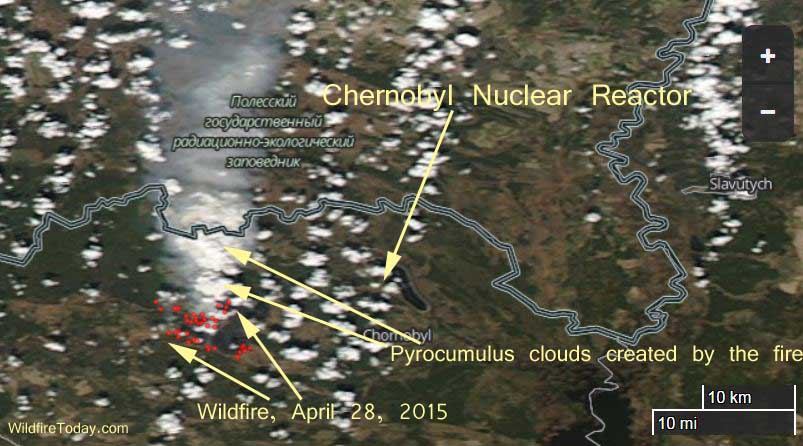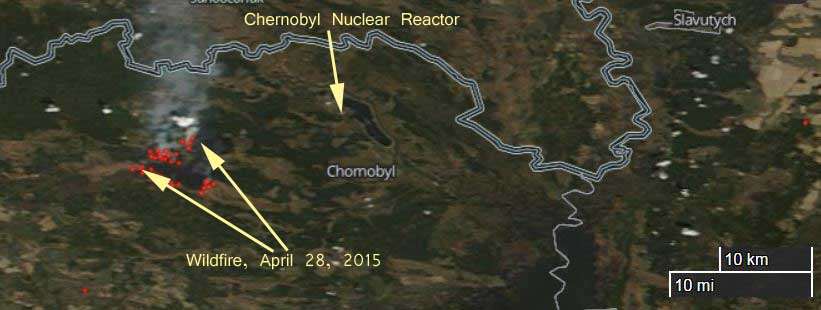
The Prime Minister of the Ukraine was quoted as saying the large fire east of the melted-down and abandoned Chernobyl Nuclear Reactor is “localized and contained. Radiation levels are normal”, he told a government meeting on April 29.
On April 28 we published a photo showing the location of the fire about 10 miles (16 kilometers) west of Chernobyl. It included smoke being pushed to the north and one cloud that could have been a pyrocumulus created by the fire. Today, April 29, we found a satellite photo (above) that was taken later in the day on April 28, that showed massive pyrocumulus clouds, which would indicate extreme fire behavior from a very active fire that was far from being contained.
The blaze, which we estimate to be at least 9,000 acres, is burning in an area contaminated with radioactive particles which could become airborne during a wildfire. It is burning within the Chernobyl Exclusion Zone, also known as the 30 Kilometer Zone, or the Chernobyl Zone of Alienation.
The video below was uploaded April 29, 2015. Here is the description:
Fire engulfed a large sector of woods in the exclusion zone around the destroyed Chernobyl nuclear power plant on Tuesday.
Other articles on Wildfire Today tagged Chernobyl.

